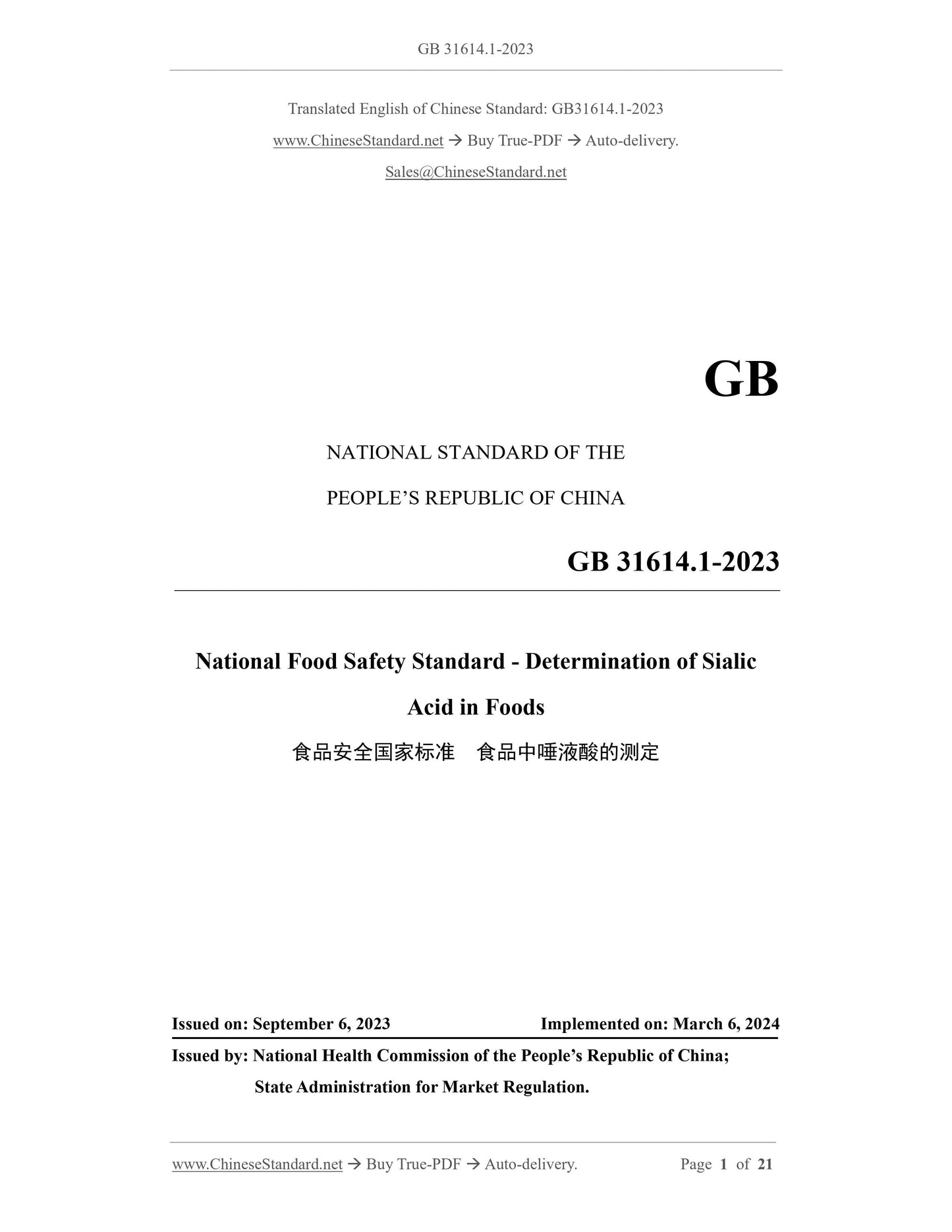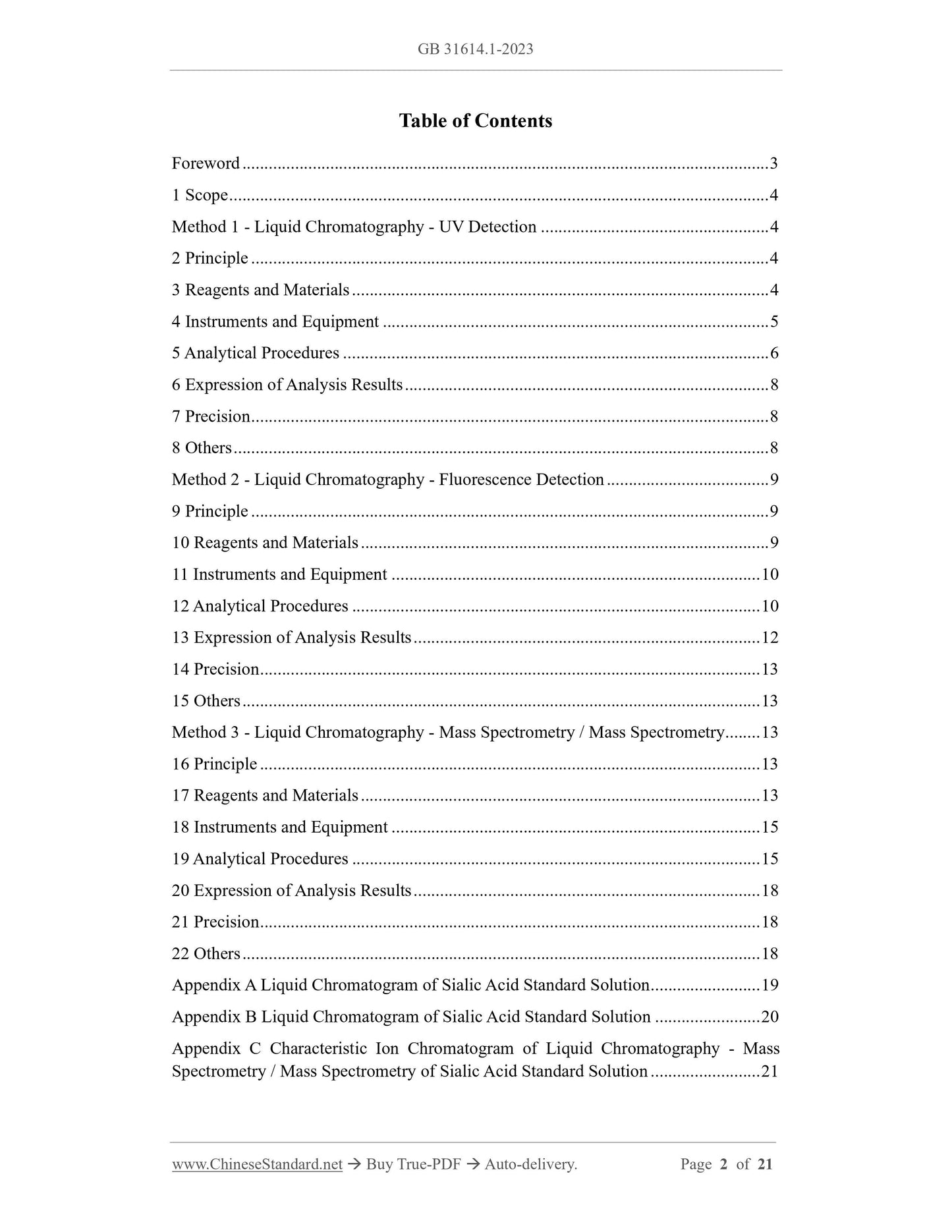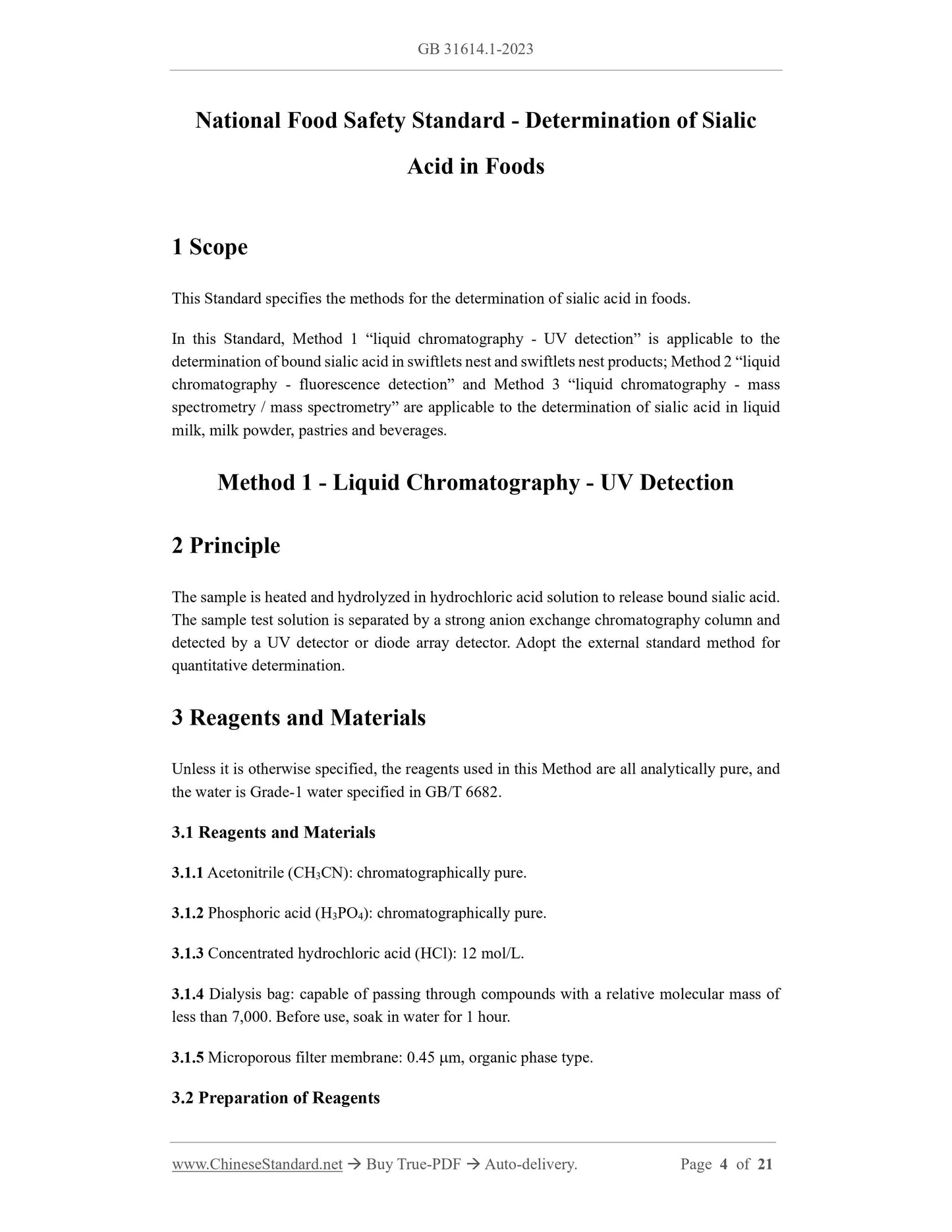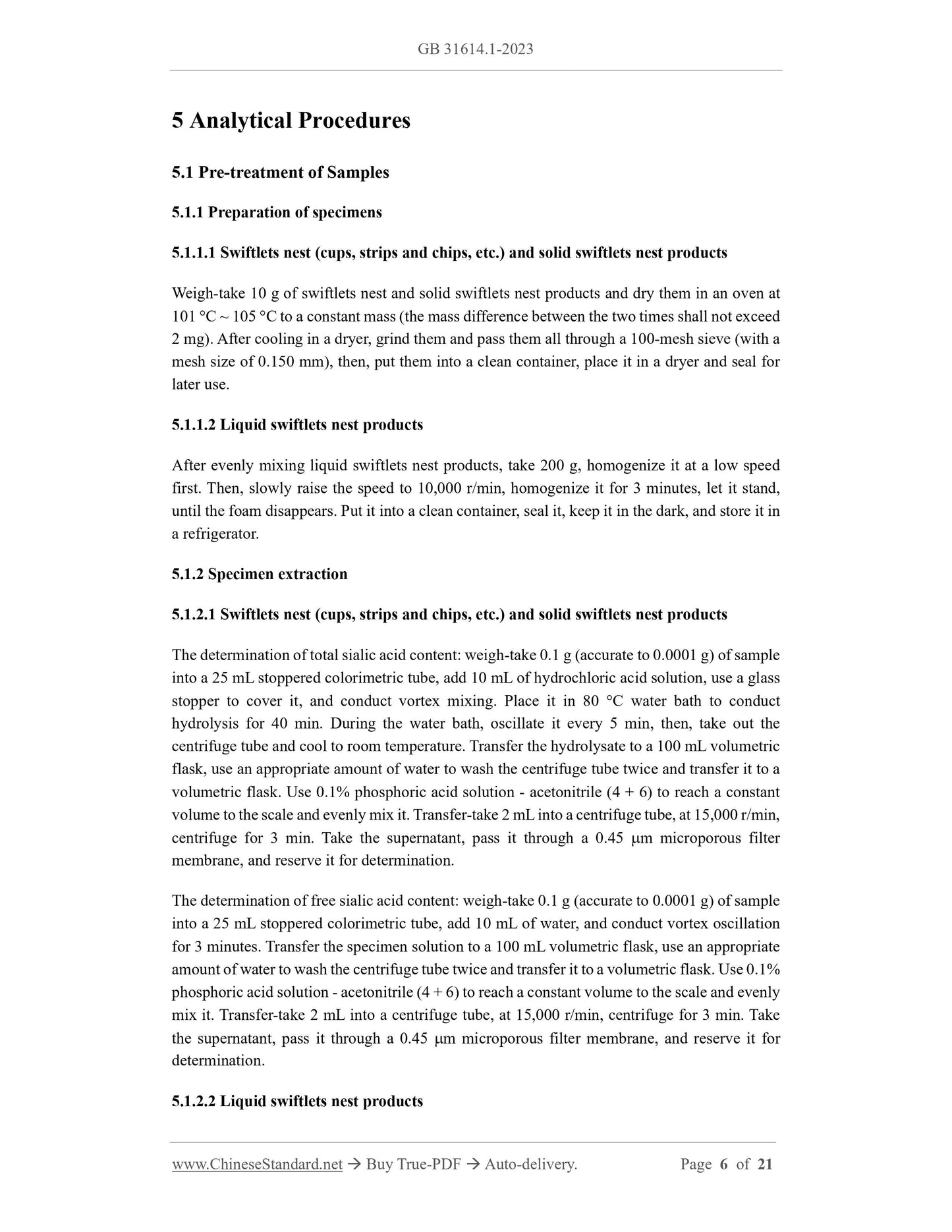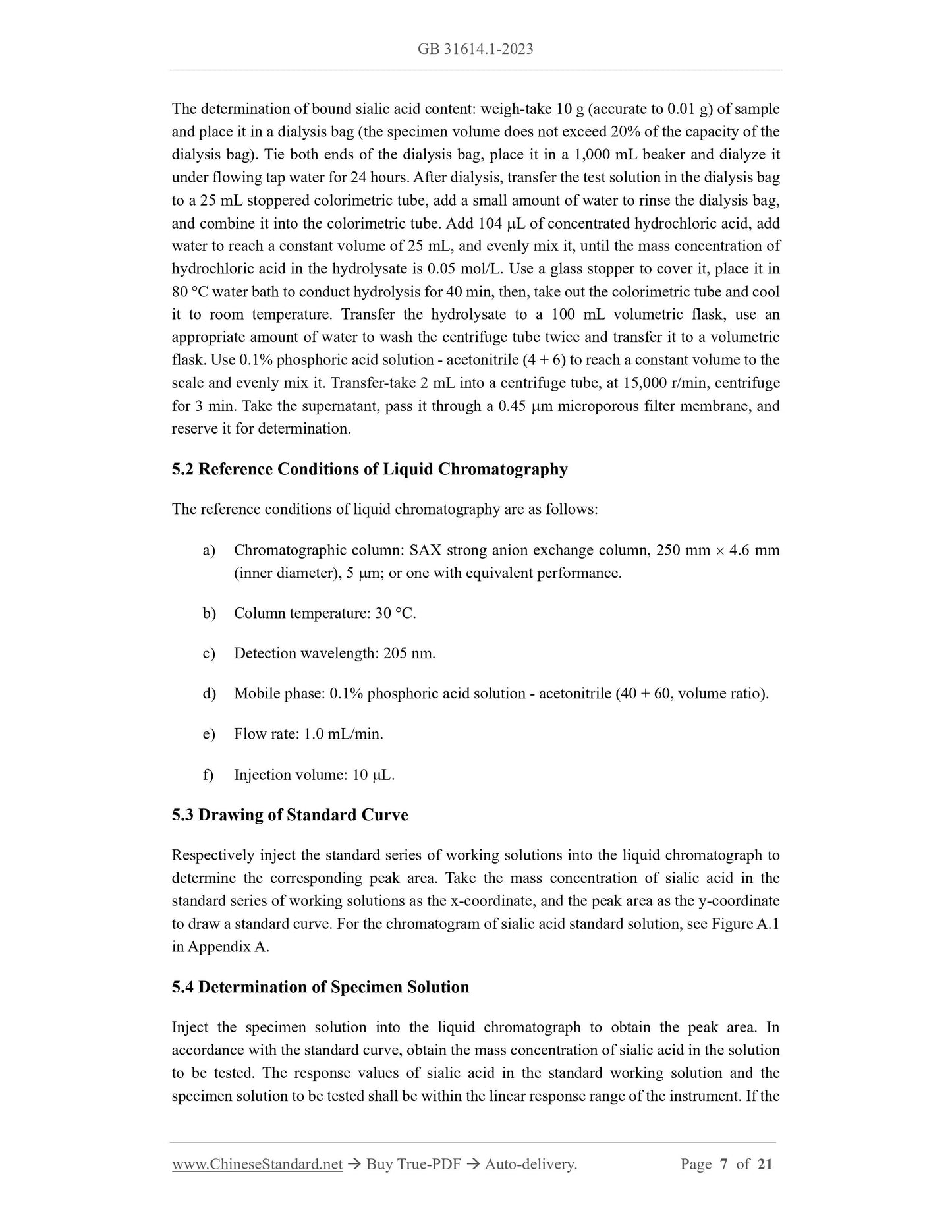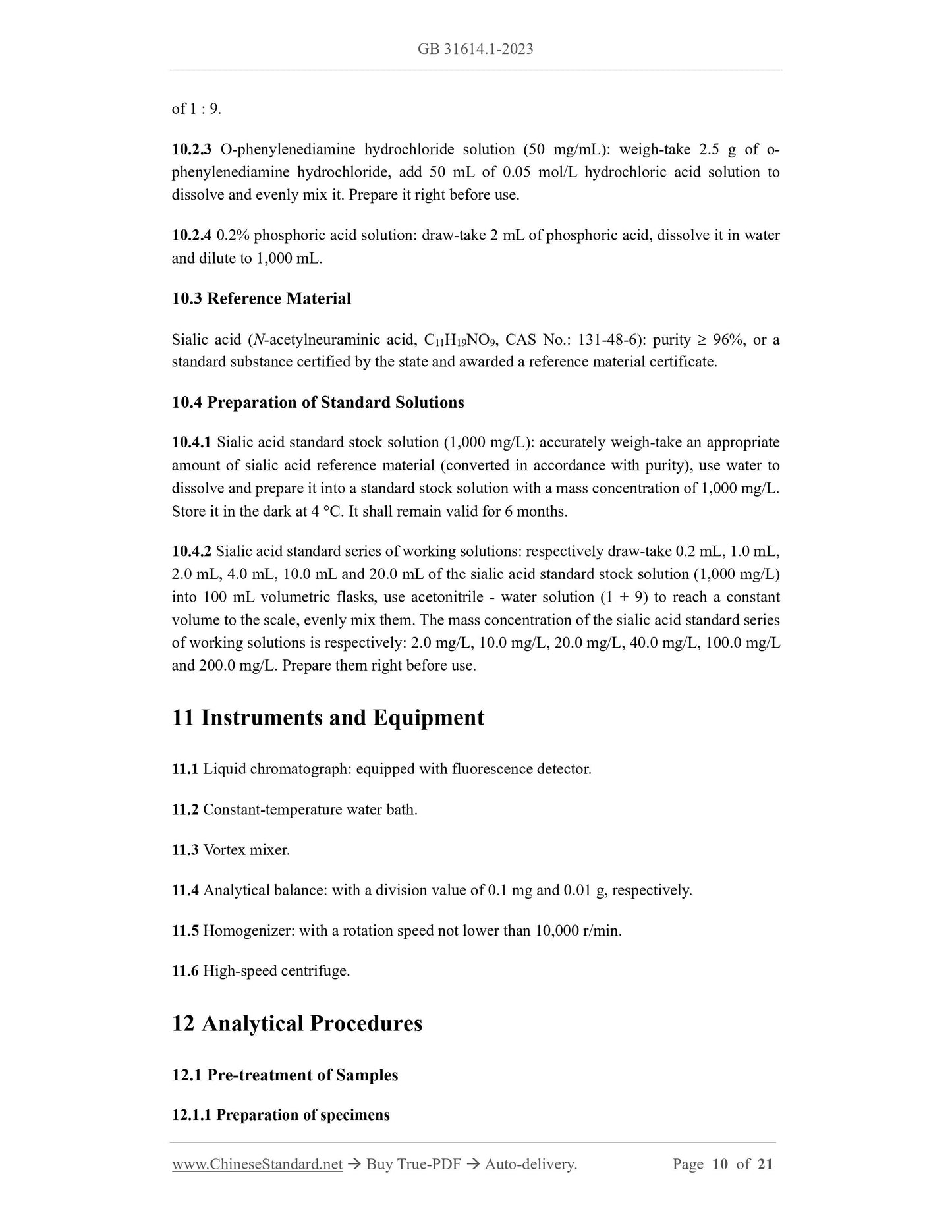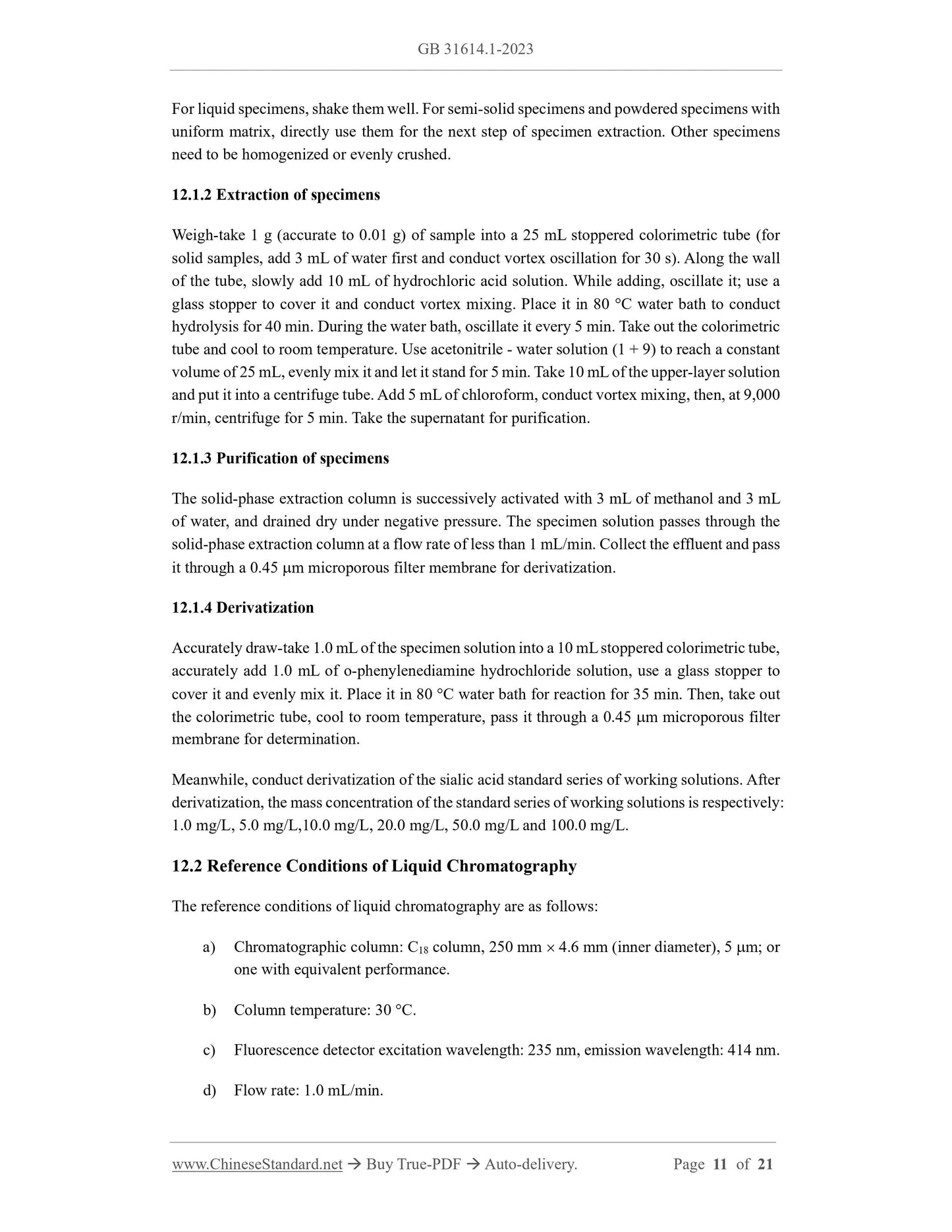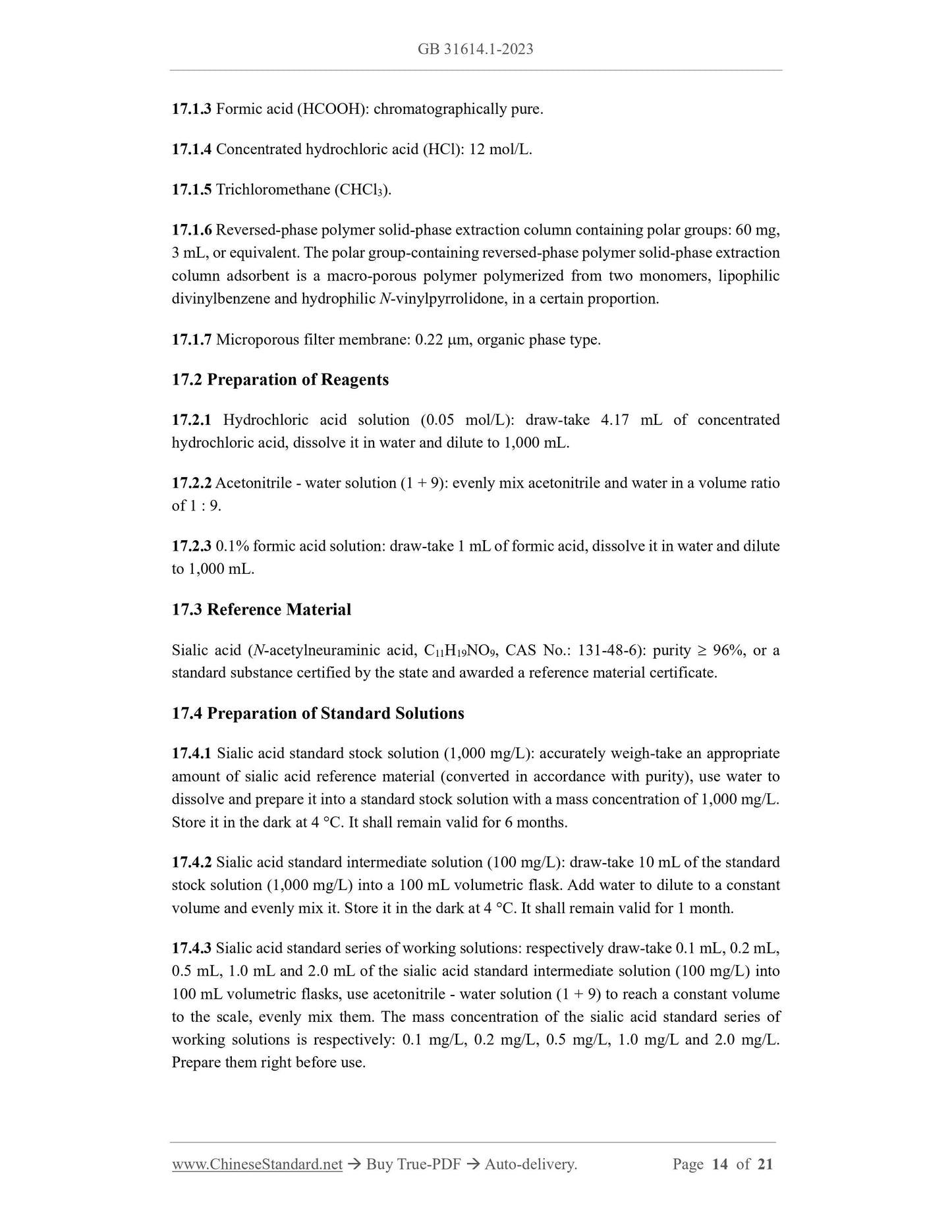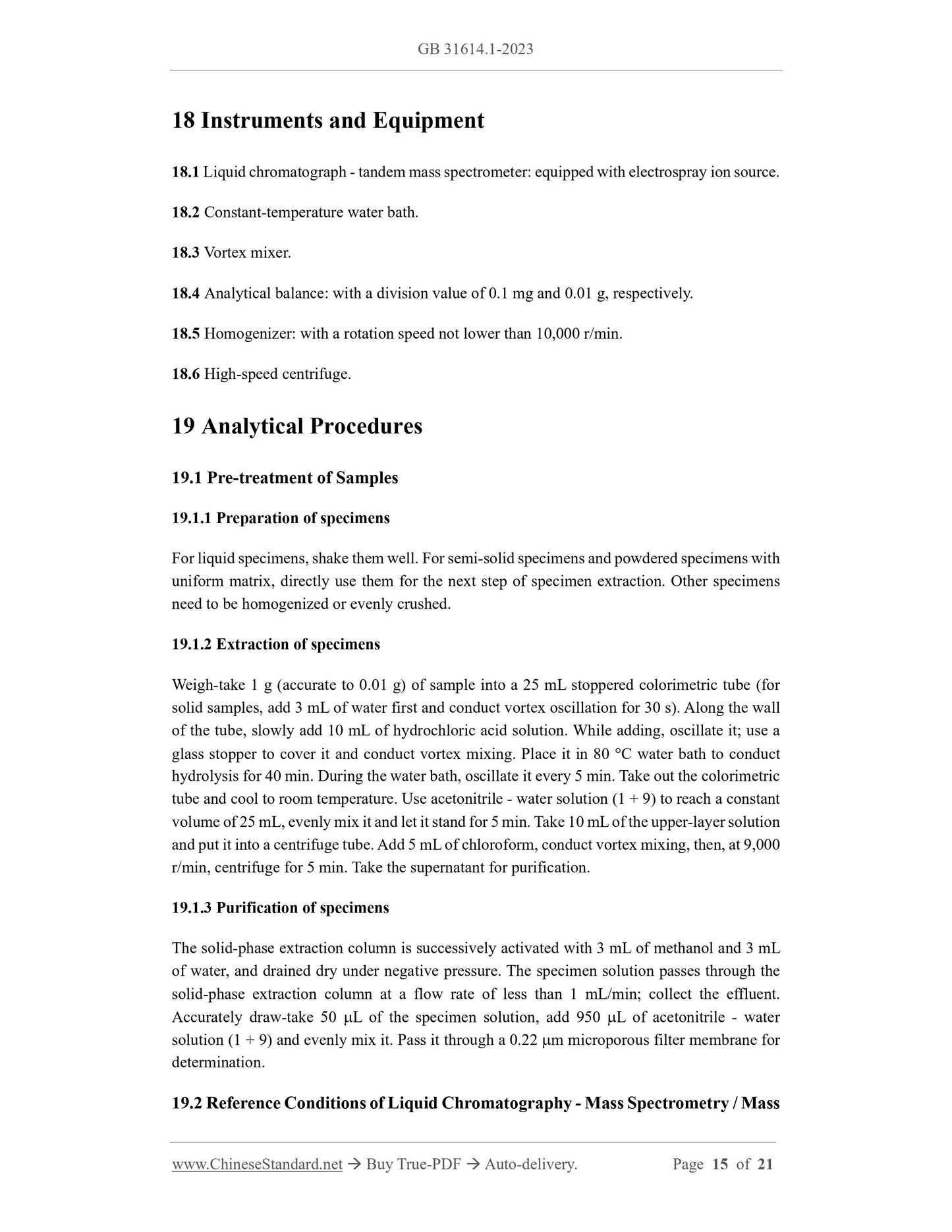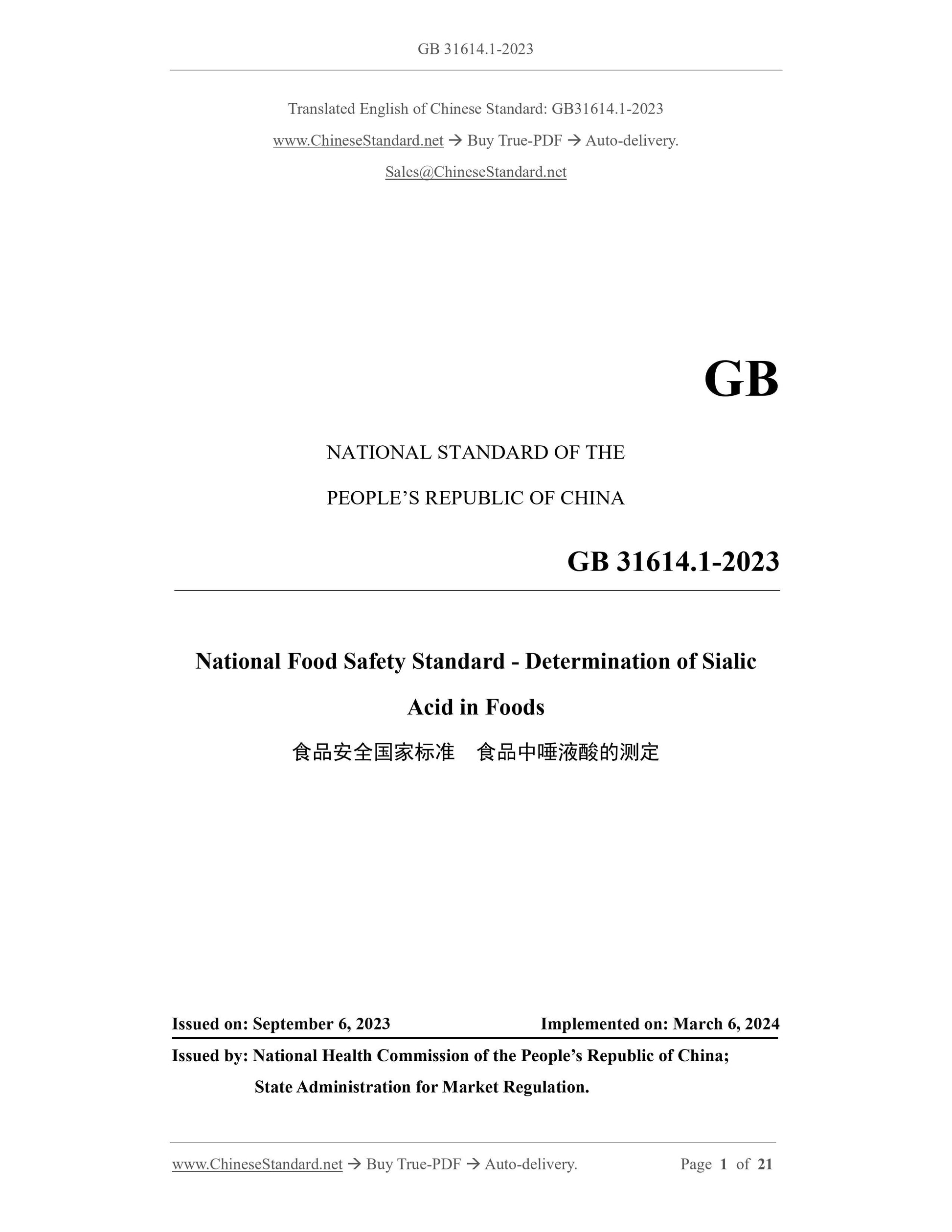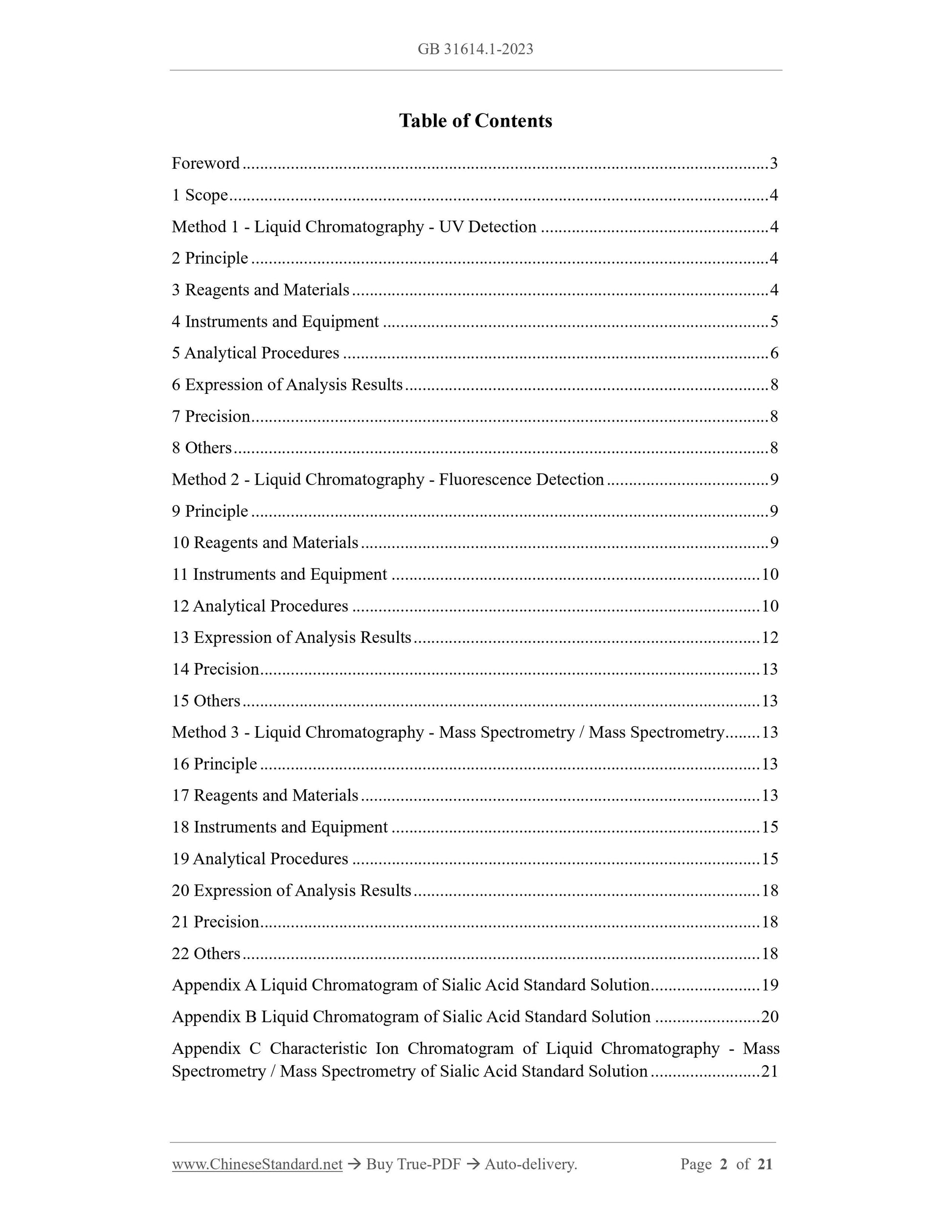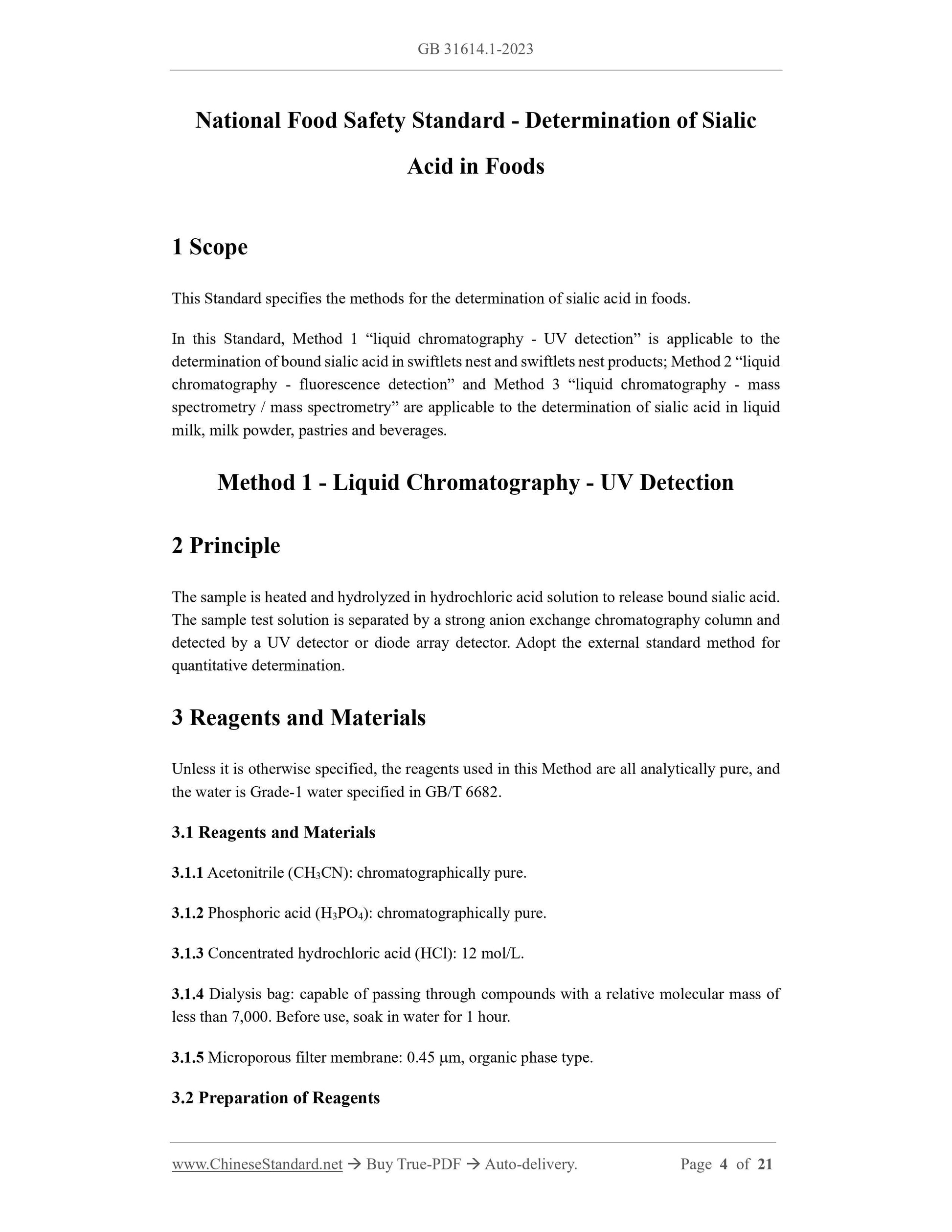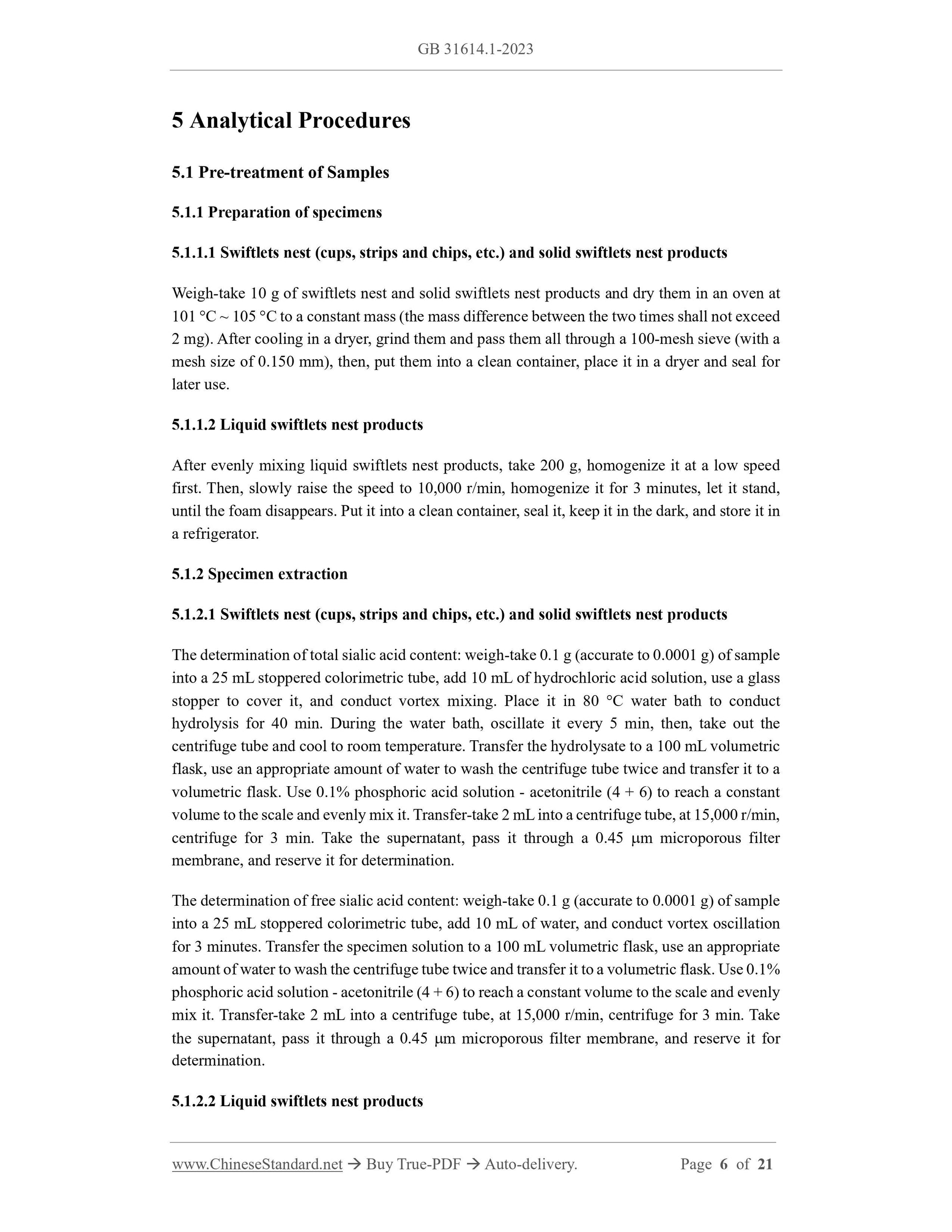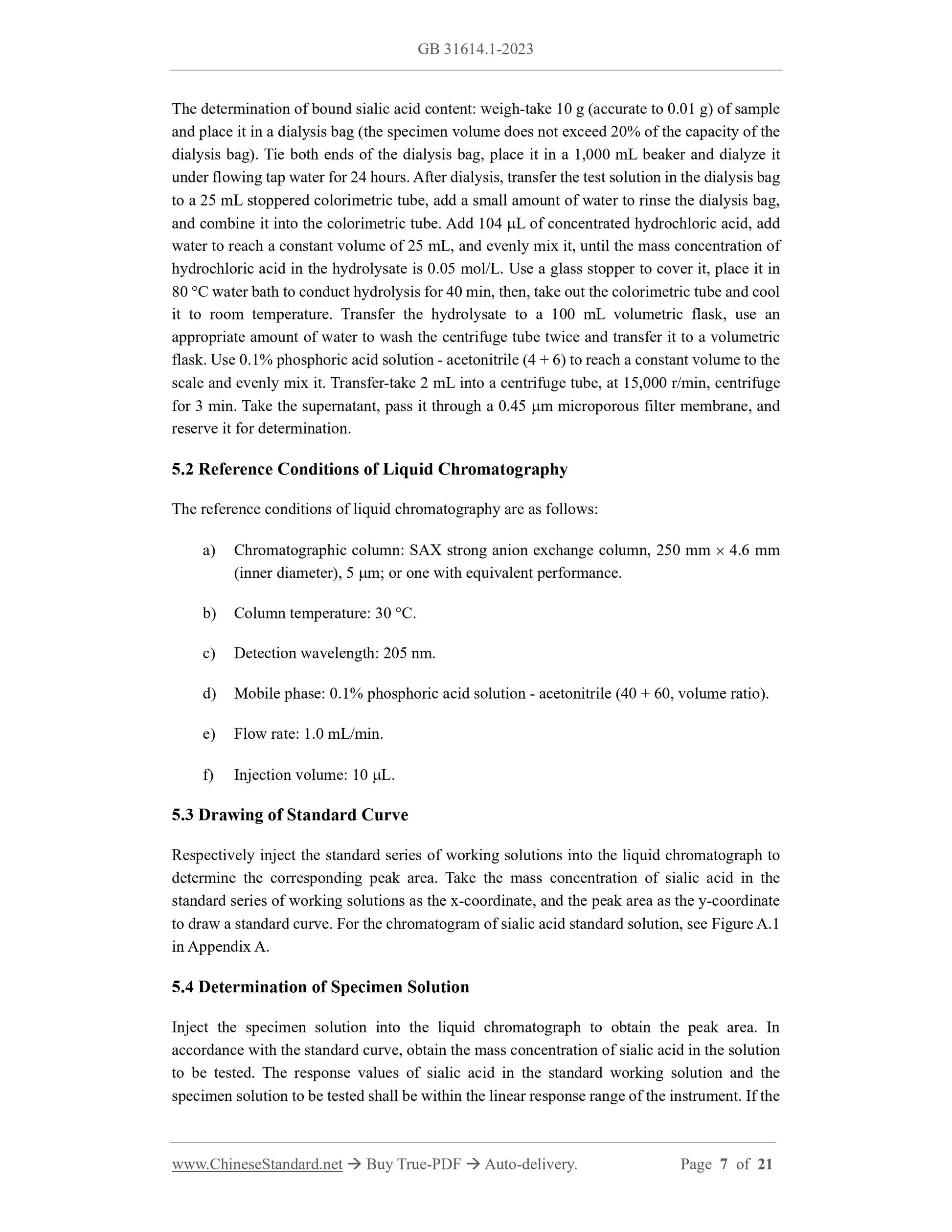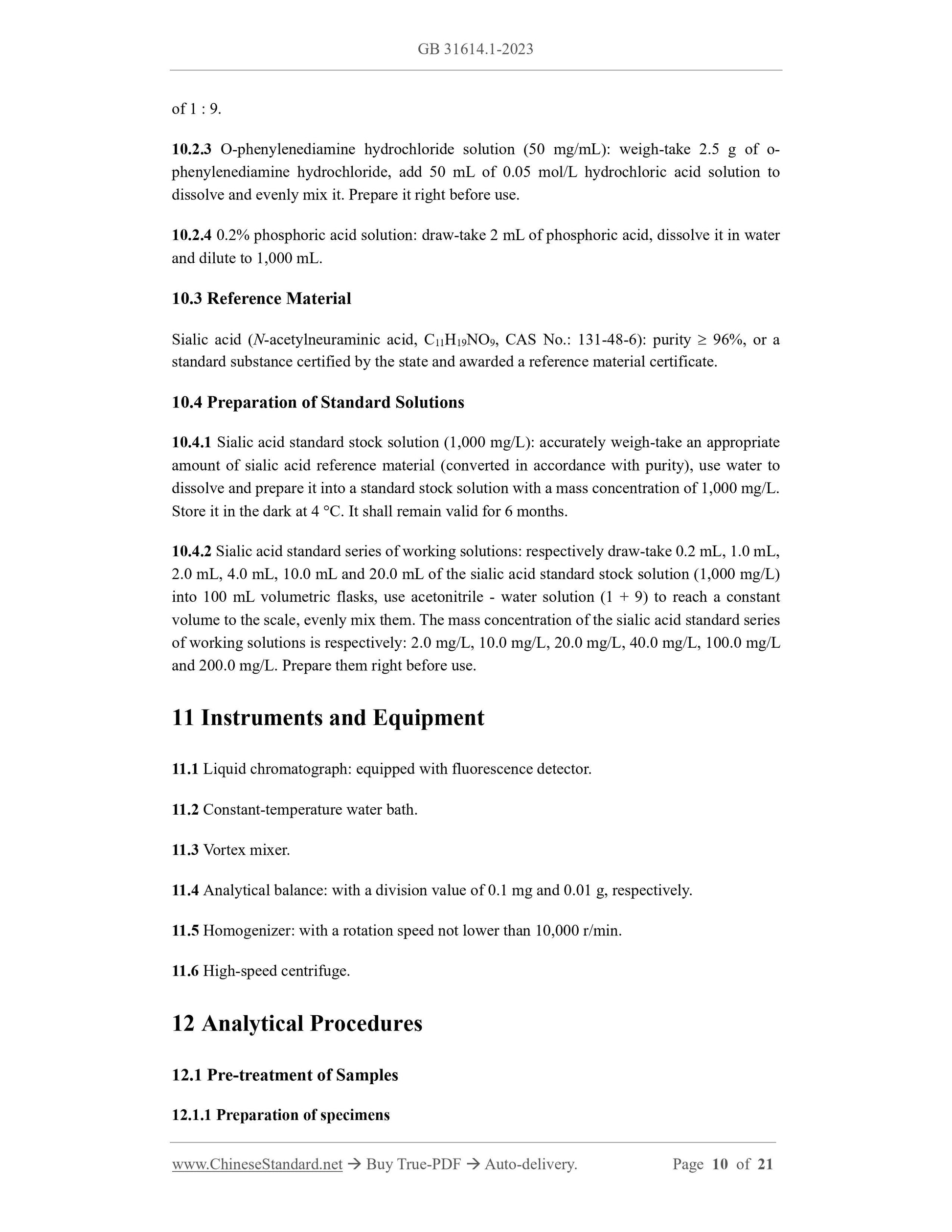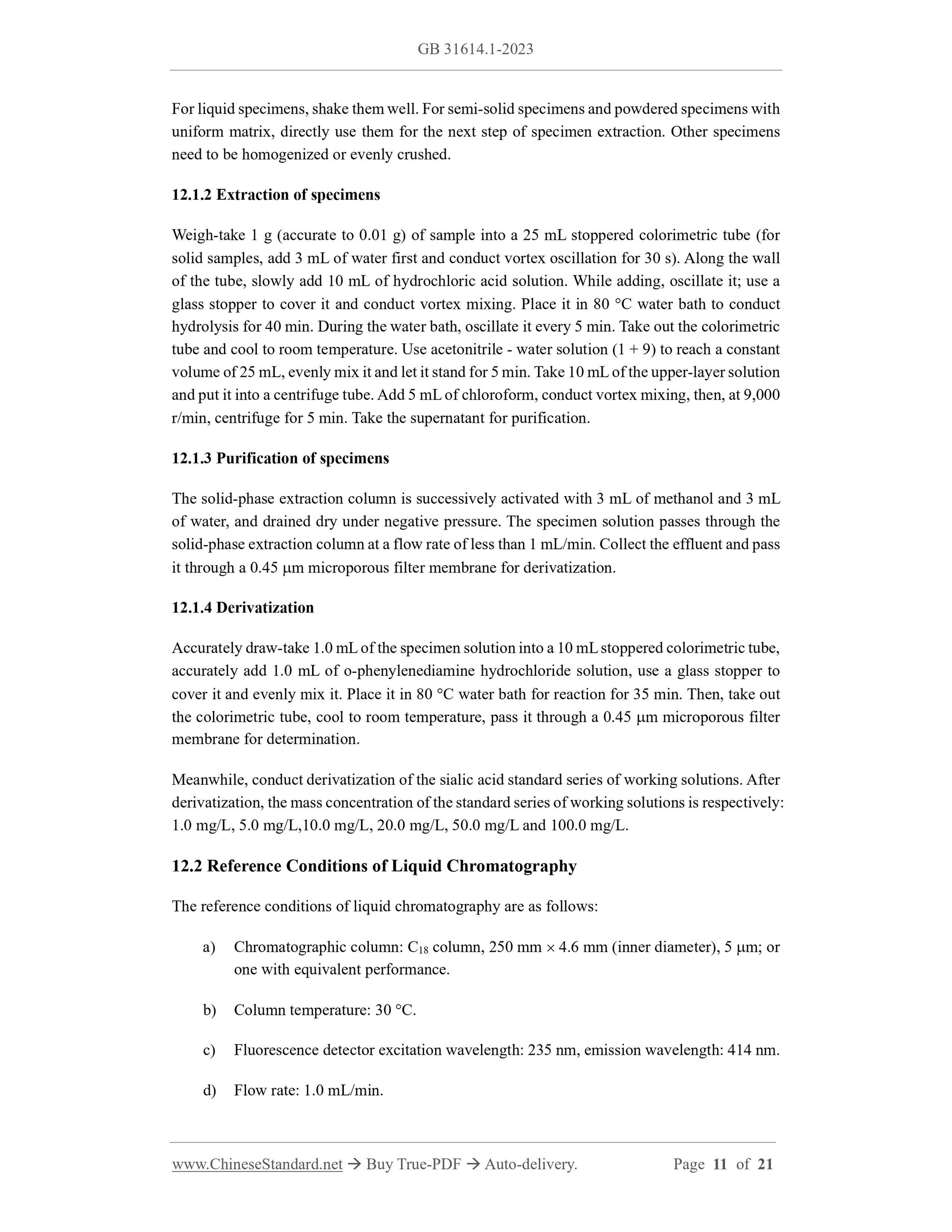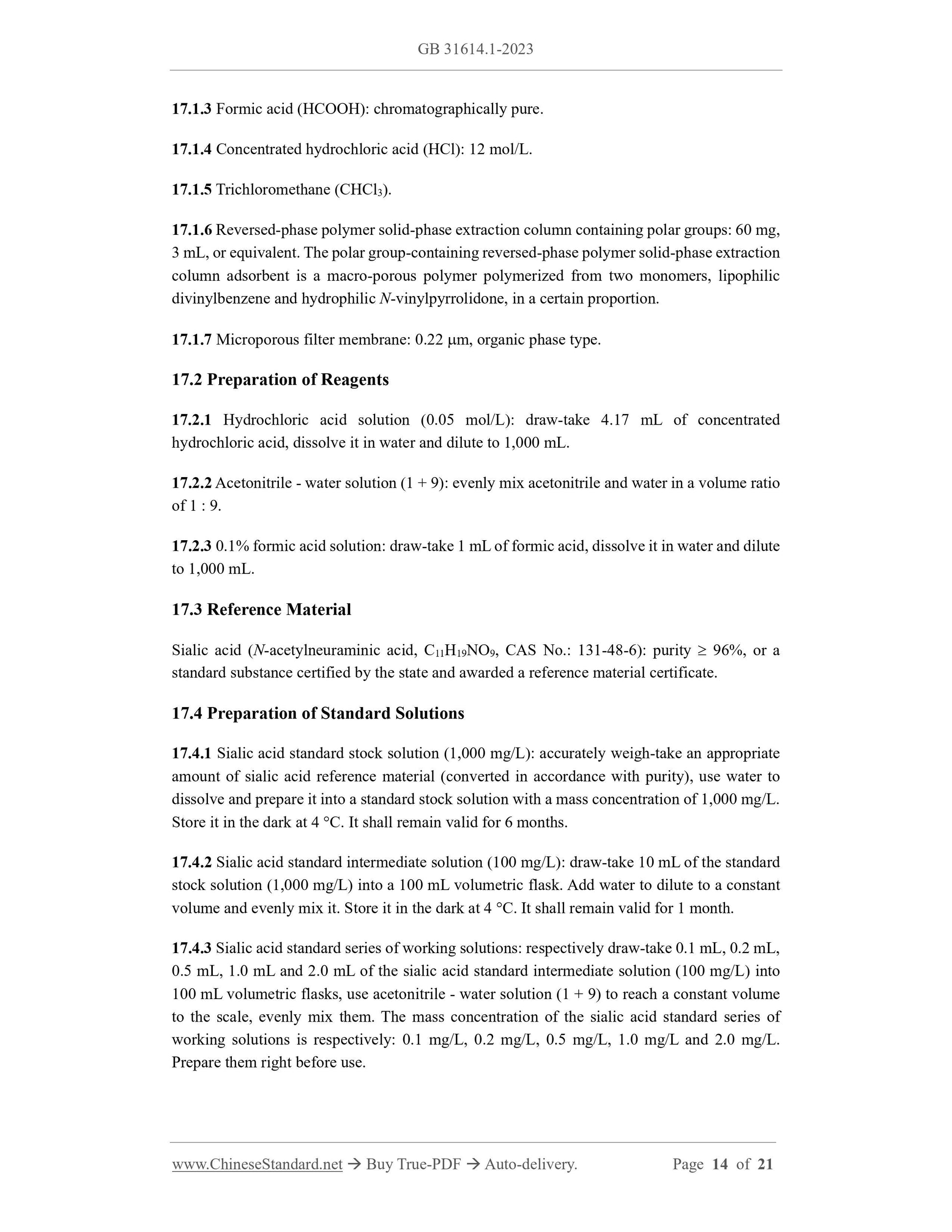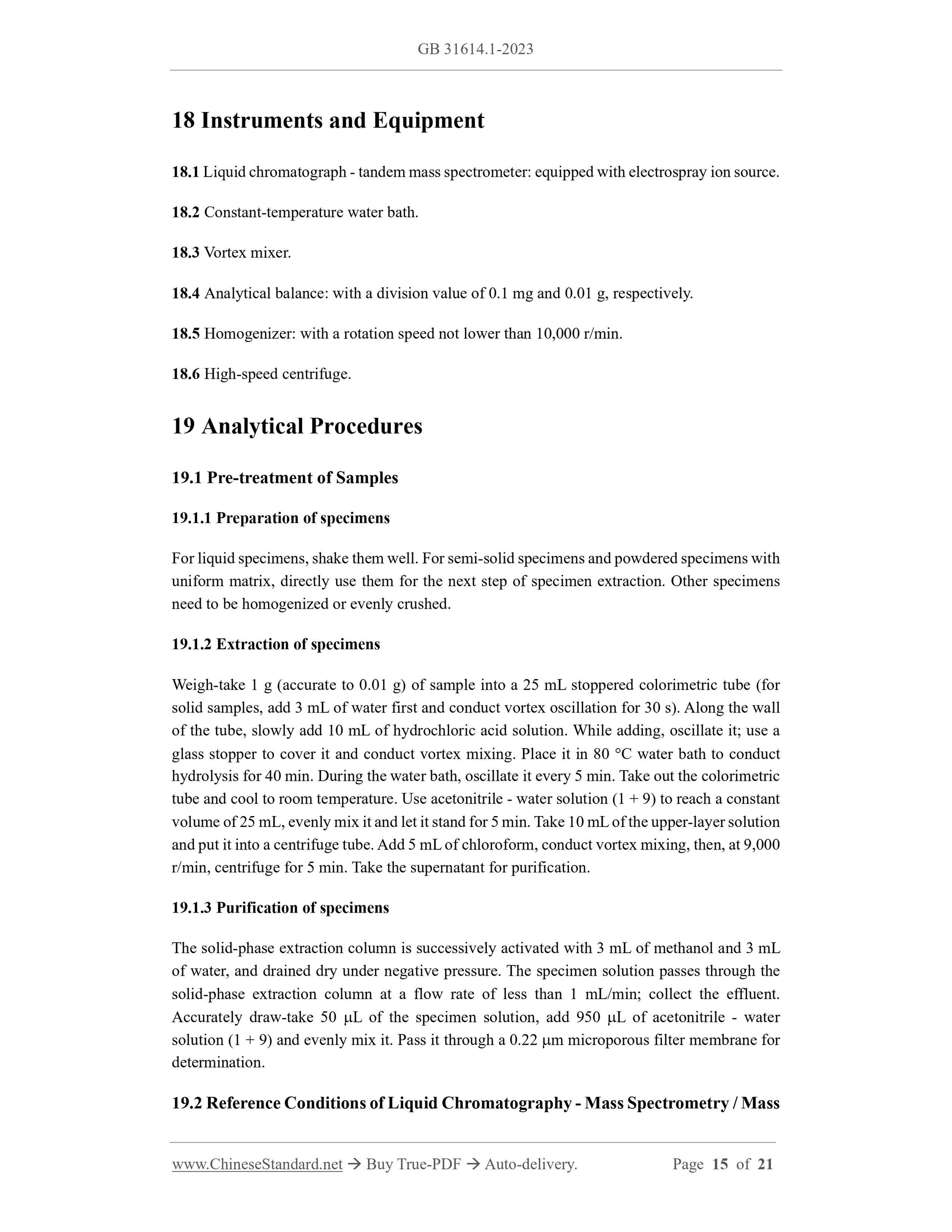1
/
of
9
www.ChineseStandard.us -- Field Test Asia Pte. Ltd.
GB 31614.1-2023 English PDF
GB 31614.1-2023 English PDF
Regular price
$260.00
Regular price
Sale price
$260.00
Unit price
/
per
Shipping calculated at checkout.
Couldn't load pickup availability
GB 31614.1-2023: National food safety standard - Determination of sialic acid in foods
Delivery: 9 seconds. Download (and Email) true-PDF + Invoice.Get Quotation: Click GB 31614.1-2023 (Self-service in 1-minute)
Newer / historical versions: GB 31614.1-2023
Preview True-PDF
Scope
This Standard specifies the methods for the determination of sialic acid in foods.In this Standard, Method 1 “liquid chromatography - UV detection” is applicable to the
determination of bound sialic acid in swiftlets nest and swiftlets nest products; Method 2 “liquid
chromatography - fluorescence detection” and Method 3 “liquid chromatography - mass
spectrometry / mass spectrometry” are applicable to the determination of sialic acid in liquid
milk, milk powder, pastries and beverages.
Method 1 - Liquid Chromatography - UV Detection
Basic Data
| Standard ID | GB 31614.1-2023 (GB31614.1-2023) |
| Description (Translated English) | National food safety standard - Determination of vitamin B6 in foods |
| Sector / Industry | National Standard |
| Classification of Chinese Standard | X09 |
| Word Count Estimation | 27,233 |
| Date of Issue | 2023-09-06 |
| Date of Implementation | 2024-03-06 |
| Issuing agency(ies) | National Health Commission of the People's Republic of China, State Administration for Market Regulation |
| Summary | This standard specifies the method for determination of vitamin B6 in food. The first method, liquid chromatography-tandem mass spectrometry, is suitable for the determination of vitamin B6 in food. The second method liquid chromatography-mass spectrometry is suitable for adding vitamin B6 (pyridoxamine, pyridoxal and pyridoxine) as nutritional fortifiers in prepared milk powder, special dietary foods, ready-to-eat cereals, baked goods and beverages. Determination of vitamin B6 (pyridoxamine, pyridoxal and pyridoxine). The third method of high performance liquid chromatography-fluorescence detection method is applicable to prepared milk powder and special dietary foods (except foods for special medical purposes) that add vitamin B6 (pyridoxamine, pyridoxal and pyridoxine) as nutritional fortifiers. Determination of vitamin B6 (pyridoxamine, pyridoxal and pyridoxine) in ready-to-eat cereals, baked goods and beverages. No. |
Share
